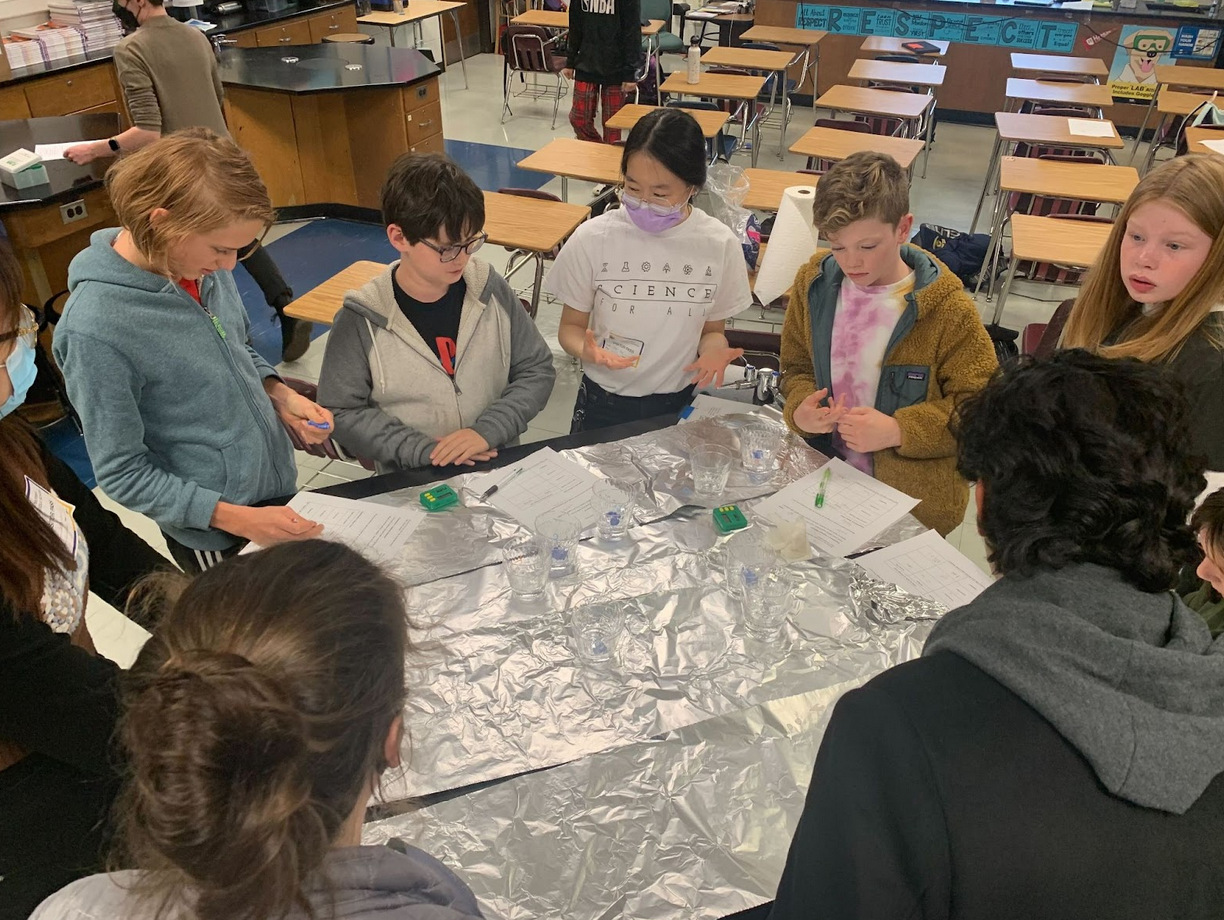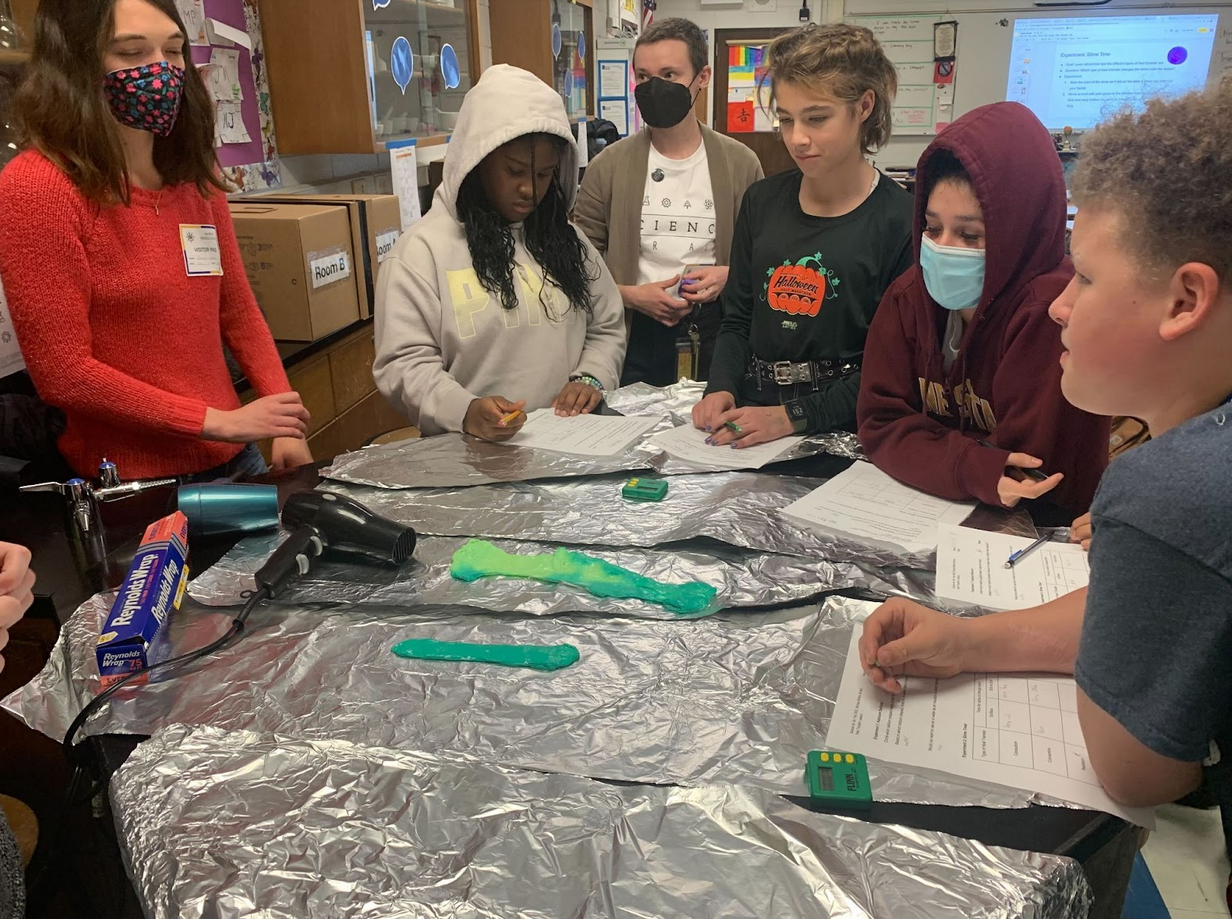November 2022 Visit on Friday, November 11, 2022
Experiment Leads: Tessa Burrows & Alison Block
The visits to Murray Middle School are an hour long and the class is a mix of 6-8th graders who are learning about earth science and how it affects the world immediately around them. To keep with the theme of the class, experiments are designed to connect back to what the students are learning or may have learned in previous years of science classes. For our November visit, Tessa and Alison led a lecture on what heat is and how it moves throughout the world. A discussion of the relationship between molecular movements, heat, and energy started off the lecture. The lecture focused on three different types of heat transfer: conduction, convection, and radiation and how those relate back to the water cycle the students had been learning about. Tessa and Alison also discussed how heat capacity and insulation relate back to energy and heat transfer. The students remained seated for our first experiment, Balloon Kabloom!
The question this experiment answered was: is air or water a better insulator for a balloon over a flame? Balloons filled with no water, some water, and fully with water were held over a flame by a graduate student mentor and the students recorded the time it took for each balloon to pop. The air filled balloon popped immediately, but the balloons with water in them took noticeably longer to pop - more water than air left the balloon totally intact even after a few minutes over the flame! This experiment showcased how insulation and heat capacity exist in the world, and how water is a much better insulator than air for this latex balloon.
Then, the students split up into three groups and cycled through three stations that demonstrated the three methods of heat transfer using thermochromatic slime. This slime had pigment that changed colors when exposed to higher-than-room-temperatures, and was a great way to visualize how quickly heat transfers. For the conduction heat transfer, the slime was suspended in a cup sitting atop some warm water. The slime’s color changed more quickly where the slime touched the sides of the cup. When the warm slime was moved to a cup floating in cold water, it was easy to see the color change back as well!

For convective heat transfer, slime was spread out over the bench surface and a hair dryer was placed at one end. Ridges in the slime were introduced to show the students how the shape of an object can affect its convective heat transfer. The ridges changed color much quicker than the valleys they created behind them.

Finally, radiative heat transfer was showcased with a basking lamp pointed at thin ropes of the slime spread on the benchtop. The students could see the color change very slowly as the lamp eventually warmed up the slime - but the students did find this to be the slowest heat transfer method of them all.
The students enjoyed the balloon popping experiment and agreed that it would be better to use water to keep something from getting hot rather than air. As the students cycled through the heat transfer stations, they had fun trying to change the slime color with their hands and seeing just how quickly the slime could change color as it went from hot to cold.